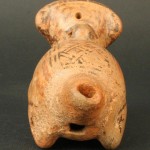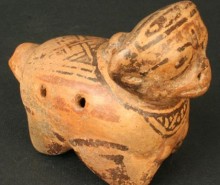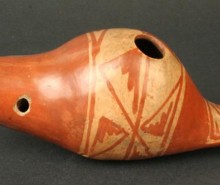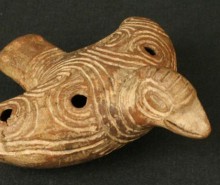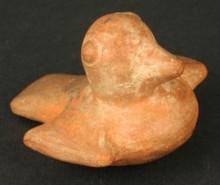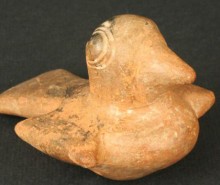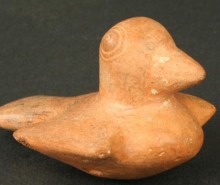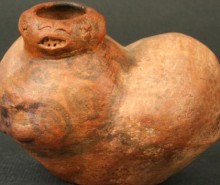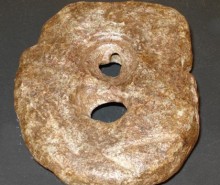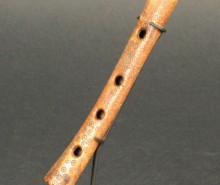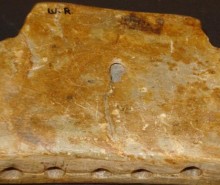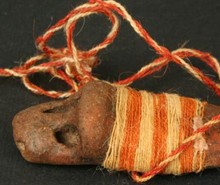Zoomorphic ocarina
This ceramic ocarina was made by the Chiriquí culture, which inhabited the coast of modern-day Costa Rica between the years 850 and 1550 CE.
The general form is of a standing quadrupedal animal, with the forelegs bent forward. The body is decorated with lines and geometric figures; the eyes are drawn on with a dark line, and are almond-shaped with a small line in the center. There are four fingering holes on the animal’s back, which allow this instrument to make five different notes. The mouthpiece is located at the figure’s tail. Inside, an air guide sets up a vibration when the air meets a sharp edge, producing the sound. The piece allows the player to play fast melodies by changing the fingering.
The instrument shows signs of wear around the mouthpiece and finger holes, suggesting that is was frequently used.
Dimensions: 850 mm high x 1080 mm long x 580 mm wide (approx 33” x 43” x 23”).
Ver ficha de documentación organológica
Part Code: MCHAP-1563





































